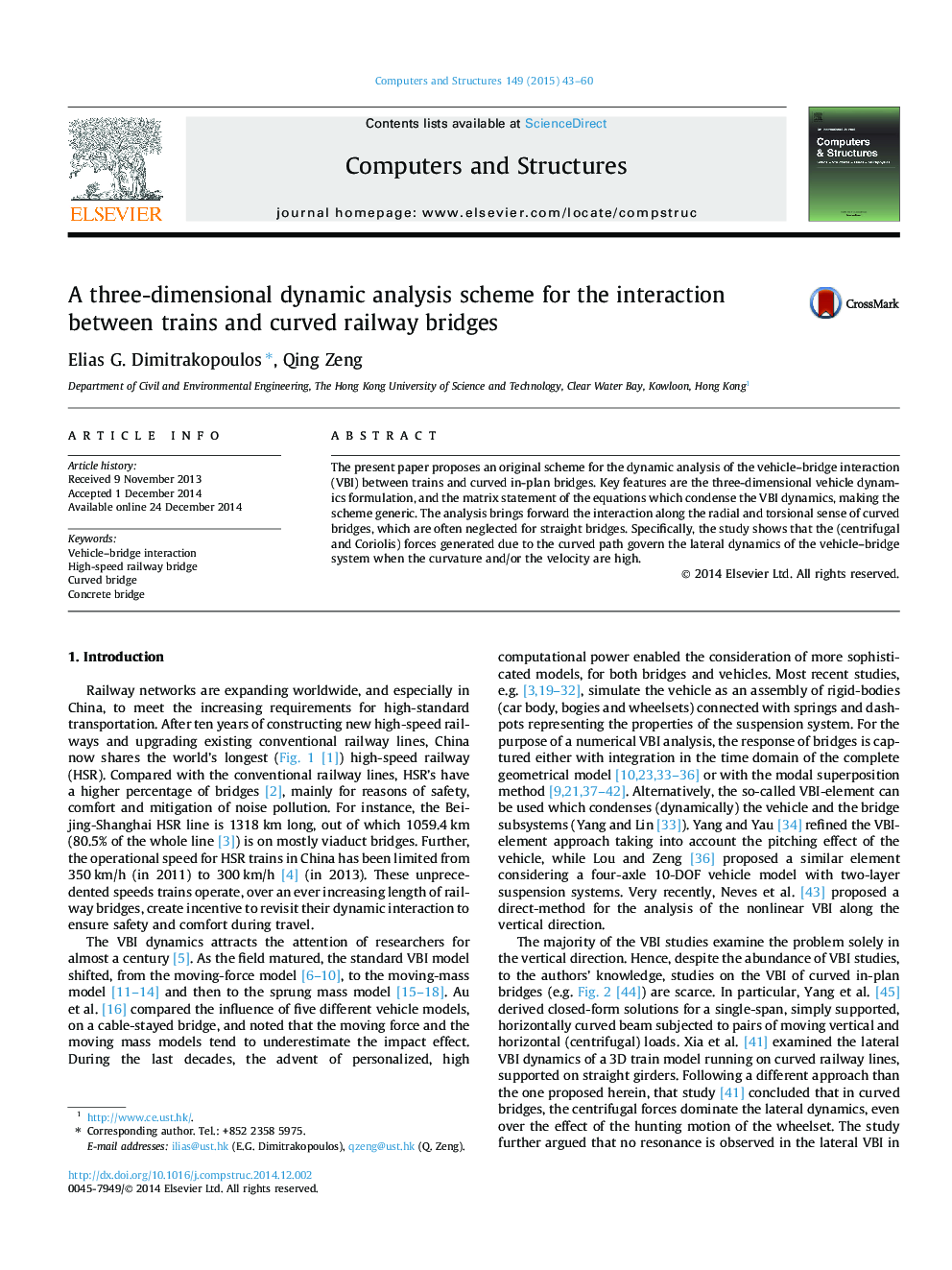| Article ID | Journal | Published Year | Pages | File Type |
|---|---|---|---|---|
| 509738 | Computers & Structures | 2015 | 18 Pages |
•We focus on high-speed trains running over curved in-plan bridges.•We account for the three-dimensional dynamic behavior of the train vehicles.•The proposed scheme is (readily) applicable for different bridges and/or vehicles.•The curved-path forces govern the radial-dynamics for high curvatures/velocities.•The self-excitations dominate the radial-dynamics for low curvatures/velocities.
The present paper proposes an original scheme for the dynamic analysis of the vehicle–bridge interaction (VBI) between trains and curved in-plan bridges. Key features are the three-dimensional vehicle dynamics formulation, and the matrix statement of the equations which condense the VBI dynamics, making the scheme generic. The analysis brings forward the interaction along the radial and torsional sense of curved bridges, which are often neglected for straight bridges. Specifically, the study shows that the (centrifugal and Coriolis) forces generated due to the curved path govern the lateral dynamics of the vehicle–bridge system when the curvature and/or the velocity are high.
